DEFINITION: The hemlock wooly adelgid (HWA), Adelges tsugae (Annand), is an aphid-like insect that originated in Japan and that infests hemlock species. It was first introduced into this country on the west coast in British Columbia in the 20s, and then was found in Virginia in the 50s. These were presumably separate, accidental infestations.
OCCURRENCE: Since the introduction in Virginia, HWA has rapidly moved up the east coast to New England and is devastating both the eastern hemlock (Tsuga canadensis) and the Carolina hemlock (T. caroliniana). Major infestations are found in states from North Carolina to southern New England. There are quarantines in effect in Maine, New Hampshire and Vermont which regulate the movement of hemlock seedlings, nursery stock, and various lumber and bark products from infected areas.
DAMAGE: The HWA attaches to the stems at the base of the needles and both kills the needles and prevents new growth. The tree often dies within 4 years, although some trees will survive longer while exhibiting diminished growth. If untreated, death is almost inevitable.
LIFE CYCLE: There are two generations of HWA per year.
During March and April the adults lay eggs in a cottony mass, which hatch into larvae in April and May and which soon attach to the young hemlock twigs. They then settle down and feed until they mature into adults in mid-June.
This new adult generation has one odd feature some of the adults are winged and can only reproduce on certain Japanese spruce. The winged form sets off looking for the spruce and dies off. Unfortunately, the rest of the adults are wingless and happily infest eastern American hemlocks. They lay eggs in mid-June, which hatch and attach to the hemlocks. These adults will over-winter and lay eggs the next spring.
IDENTIFICATION OF INFECTED HEMLOCKS: Look for dessicated needles, turning gray-green and dropping off, and white, cottony masses on the undersides of twigs.
BIOLOGICAL CONTROLS: There are no known effective native predators for the HWA, but there is a Japanese ladybug, Pseudoscymnus tsugae, which is very effective in Japan (helped by some natural resistance of Japanese hemlock species).
The Connecticut Agricultural Experiment Station (CAES) is actively engaged in releasing large quantities of this beetle in various infested areas and results are encouraging. Future success will depend on whether enough Japanese ladybugs can be released to keep up with the HWA.
FOREST MANAGEMENT: Without biological controls, the eastern hemlock forests are probably doomed. Spraying with pesticides is both prohibitively expensive and often not feasible because of terrain or proximity to streams.
GARDEN AND NURSERY MANAGEMENT PHYSICAL MEANS: In a garden or nursery situation, It is often possible to control the HWA and save the hemlocks. The first step is to keep the HWA away discourage birds, squirrels and deer from coming near, and dont put feeders near the hemlocks. Also, keep any plant material from possibly infected areas away.
Eggs and crawlers can be knocked off by wind and rain, so a good hosing periodically in spring and early summer can reduce an infestation.
GARDEN AND NURSERY MANAGEMENT SUSCEPTIBILITY: Stressed trees are much more susceptible to damage, so its crucial to keep the trees healthy and well fed and watered. Drought stress in particular weakens the tree, as does planting in an inappropriate location.
However, if the hemlock is severely infested already, dont fertilize with a high nitrogen fertilizer. This will only enhance the HWA growth. Wait until the infestation is under control before fertilizing.
GARDEN AND NURSERY MANAGEMENT CHEMICAL MEANS: The first choice is to spray with horticultural oils or insecticidal soaps. These work by essentially suffocating the HWA, so you need to thorough coat the tree or the insects will survive. This can be difficult if the tree is very tall or inaccessible to spray equipment. Two sprays a year will probably be necessary, and expect to continue for a number of years until either the neighborhood is completely disinfected or other controls are available.
The next choice is imidacloprid (Merit) which can be applied by stem injection or by soil drenching. The chemical is taken up by the tree systemically and will protect the tree for 5 months or more, but only if the tree has a healthy sap flow. If the tree is heavily infested, the sap wont flow and the pesticide never gets to the HWA.
GARDEN AND NURSERY MANAGEMENT ALTERNATE SPECIES: You can also plant alternate hemlock species which are relatively resistant to HWA. Some American hemlocks from the west coast as well as Japanese hemlocks could be used.
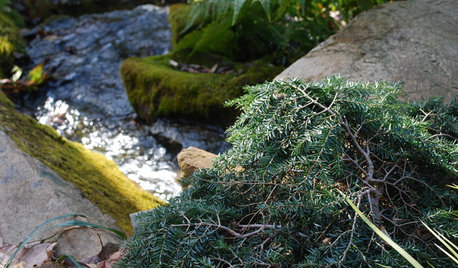
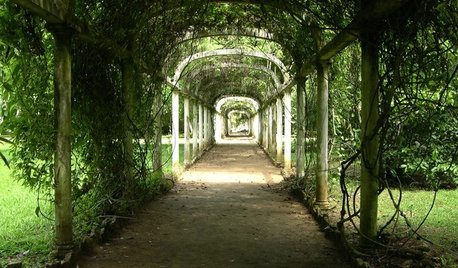
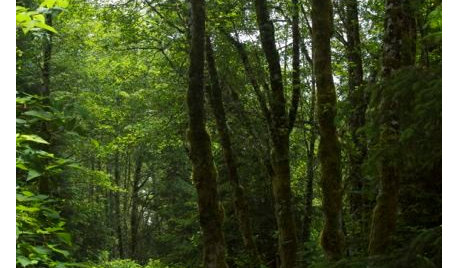

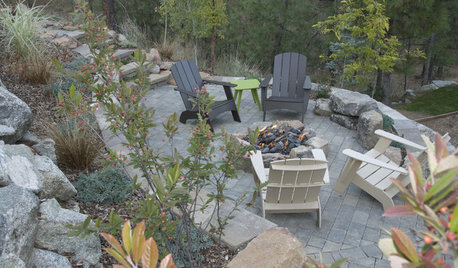
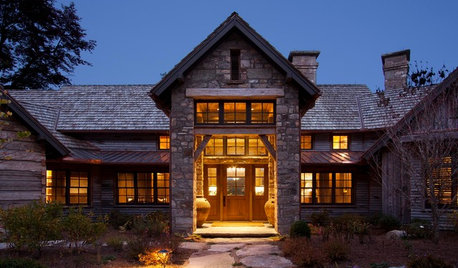

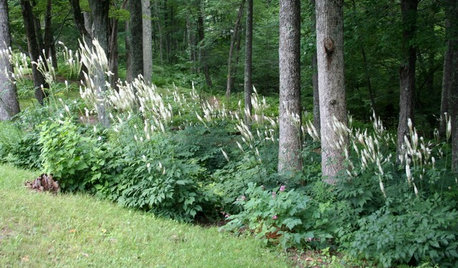





Related Discussions
What can I plant under tall hemlock that's part shade and dry?
Q
Hemlock Help - Wooly Adelgid
Q
Imidacloprid powder for hemlock adelgids?
Q
Am I going to lose this weeping hemlock?
Q